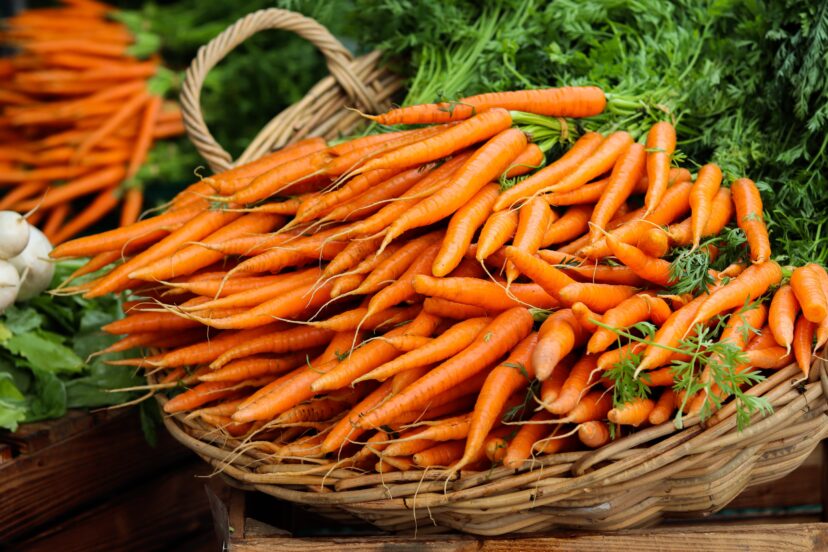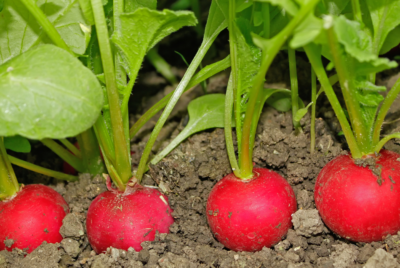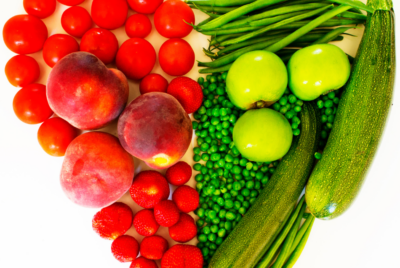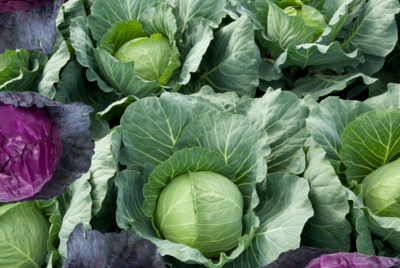Companion Plants for Carrots
Companion Plants for Carrots
I. Introduction: Explanation of companion planting
Hello fellow gardeners! Today, I’m going to delve into the fascinating world of companion plants, with a special focus on our crunchy and nutritious friends – carrots. Firstly for those of you that don’t know I will try to give you a real understanding of what companion planting really means. It’s actually about creating beneficial plant friendships right in your garden. What I mean by that is a method that harnesses natural processes to boost plant growth and health. So, if you want to unlock the secrets to thriving carrots by pairing them with the perfect companion plants, you’re at the right place! Here you can discover which crops can boost growth, deter pests, and improve soil health for your spinach. Come see which plant combinations will help you get the most out of your carrot harvest!

Now, you might wonder, why do carrots particularly benefit from companions? The answer lies in their response to specific plant pairings. Carrots thrive remarkably well when they’re grown alongside certain plants, reaping benefits such as improved soil quality and effective pest control. Moreover, these beneficial partnerships don’t just stop at pest deterrence; they extend to enhancing the overall growth environment for your carrots. So, let’s embrace this natural and harmonious approach to gardening, where each plant supports and enhances the growth of its neighbor.
You can grow carrots in a raised garden bed or straight into the ground with good soil.Some people prefer raised garden beds because they feel it gives them more control over the weeds.
When I first started out I used to buy all my garden plants as seedlings, sometimes seeds till I got more confident. Now I always let some of my crop go to seed and I collect and store my own seeds as they are all non gmo and organic.
Benefits of companion plants for carrots
Companion planting offers a variety of specific benefits for carrots, enhancing their growth, health, and flavor. Here are some key advantages:

Pest Deterrence:
Certain companion plants can repel common pests that afflict carrot crops. For example, aromatic herbs like rosemary and sage are known to ward off carrot flies. This natural form of pest control reduces the need for chemical pesticides.
Improved Soil Conditions:
Some companion plants help improve soil structure and nutrient content. For instance, legumes can fix nitrogen in the soil, making it available for carrots, which are heavy nitrogen feeders. This symbiotic relationship ensures that carrots receive the necessary nutrients for optimal growth.
Enhanced Growth:
Companion planting can lead to better overall growth of carrots. Plants like radishes, when planted alongside carrots, help to break up the soil, making it easier for carrot roots to grow deep and straight.
Disease Prevention:
The diversity of plants in companion planting can reduce the risk of diseases spreading. Different plants attract varied beneficial insects and microbes, which can help in controlling soil-borne diseases that might otherwise affect carrot crops.
Weed Suppression:
Low-growing plants, like lettuce, can act as living mulch when planted with carrots. They cover the ground, reducing weed growth and maintaining soil moisture, which is beneficial for carrots that require consistent moisture levels for even growth.
Attracting Beneficial Insects:
Flowers like marigolds and nasturtiums attract beneficial insects, including pollinators and predators of common pests. These insects contribute to a healthier garden ecosystem, indirectly benefiting carrot plants.
Maximizing Space and Yield:
Companion planting allows for efficient use of garden space. Carrots can be interplanted with quicker-growing vegetables like lettuce or spinach, which are harvested before the carrots need more room. This leads to a higher yield from the same plot of land.
If you have metal raised garden beds life wil be easier if you set up an automatic sprinkler system.
But raised garden beds can be made of many materials. You could use pallets which are generally available in a lot of places for free of any other second hand materials such a railway sleepers. If you are starting out get some good quality soil from a gardening supplies store. Once you get your compost happening you can make your own.

Temperature and Moisture Regulation:
Certain companion plants can help regulate the microclimate around carrot plants. For example, taller plants can provide shade during the hottest part of the day, preventing carrots from getting too much direct sunlight and helping to retain soil moisture.
Natural Aromatherapy:
Some companion plants release chemicals that not only deter pests but can also enhance the flavor of carrots. The aromatic compounds from herbs can subtly influence the taste of carrots growing nearby.
Sustainable Gardening Practice:
Companion planting is an integral part of sustainable gardening. It reduces dependency on chemical inputs, promotes biodiversity, and contributes to a healthier, more balanced garden ecosystem.
By integrating these practices, gardeners can achieve a more productive and sustainable garden, with carrots that are healthier, tastier, and more robust. When I have an excess to my own needs I usually put a sign out front – plants for sale. Because I have so many plants and I live off my own produce the funds gathered pay for the upkeep of the garden. So my passion is now self funded.
II. Best Companion Plants for Carrots

A. Herbs that Complement Carrots Rosemary and Sage
Sage and Rosemary are excellent herbs to pair with carrots in the garden.
Rosemary:
Rosemary, known for its strong, aromatic fragrance, is especially effective in repelling carrot flies, a common pest that can damage carrot crops.
This herb acts as a natural deterrent, providing a protective shield for the carrots.
Additionally, rosemary’s robust growth doesn’t compete with the carrots for nutrients, making it an ideal companion.

Sage:
another aromatic herb, shares similar pest-repelling qualities.
Its scent is effective in warding off carrot flies, ensuring the carrots grow healthy and undisturbed.
Moreover, sage’s moderate water and nutrient needs align well with those of carrots, making them compatible garden partners.
Planting sage alongside carrots not only enhances garden health but can also add a delightful herbal aroma to the area.
3. Vegetables that Grow Well with Carrots are Lettuce and Radishes
Radishes and lettuce are two vegetables that pair exceptionally well with carrots in a garden setting, each offering unique benefits to this partnership.

3.1. Lettuce:
This leafy green is an ideal companion for carrots for several reasons.
Firstly, lettuce has shallow roots, which means it doesn’t compete with carrots for nutrients deep in the soil.
This compatibility ensures that both plants can thrive without hindering each other’s growth.
Additionally, lettuce grows quickly and covers the ground, which helps in maintaining soil moisture and suppressing weeds.
This creates a more favorable growing environment for carrots, which prefer moist, weed-free soil.
The cool, shady microclimate provided by lettuce is also beneficial for carrots, especially in warmer weather.
You may want to try a cedar raised garden bed. You can position this in a suitable spot close to your back door for easy access. I use raised bed gardening for my lettuces near the back door. Here they get the morning sun and I throw in a few carrots, in but the bulk of the carrots I grow in a raised garden bed in my garden area. I you have not had much success with your vegetable garden try raised bed gardening. As long as you don’t forget to water you might have better success. Some people love to start out in a tray seed, then replant the seedlings. I use seed starting trays as I feel this method gives me more control.
If you have a small courtyard or only a balcony get some a grow bag or two or three. These are amazing for small spaces but also for other suituations.

3.2. Radishes:
Radishes are another excellent companion for carrots.
They serve a particularly useful role when planted together.
Radishes germinate and grow much faster than carrots. I buy and use potting bags for plants. I like to give myself every edge possible.
This quick growth helps to break up and aerate the soil, which is beneficial for the root development of carrots.
Additionally, radishes can be harvested much earlier than carrots, leaving behind more space and less competition for resources as the carrots continue to grow. The radishes also act as a natural marker for the slower-germinating carrots, helping gardeners avoid accidentally disturbing the carrot seeds while the bed is still young. Furthermore, radishes can lure away pests like root flies from the carrots, acting as a sacrificial crop.
In summary, both lettuce and radishes bring distinct advantages when grown alongside carrots. Lettuce helps maintain a cool and moist soil environment, while radishes aid in soil aeration and serve as a protective decoy against pests. These synergistic relationships exemplify the benefits of thoughtful companion planting in a vegetable garden.
4. Flowers as Carrot Companions – Marigolds Nasturtiums

Nasturtiums and Marigolds are two types of flowers that make good companion plants for carrots in the garden, each offering unique benefits.
4.1. Marigolds:
These vibrant flowers are more than just a pretty addition to your garden; they play a crucial role in pest management. Marigolds are particularly known for their ability to repel a range of pests, including nematodes and even some insects like aphids and beetles, which can be harmful to carrot crops. I always have an abundance of marigolds in my garden. They weave their way inbetween all my plants as they self seed themselves and grow where they want to grow. They are absolute gems in almost any garden if you want to keep pests at bay.
The strong scent of marigolds is believed to be the key factor in this pest-repelling characteristic.
Marigolds play a dual role in your garden. Planting marigolds around your carrots can create a protective barrier, reducing the need for chemical pesticides. Additionally, marigolds attract beneficial insects like ladybugs and bees, which are important for pollination and for keeping harmful pest populations in check.

4.2. Nasturtiums:
These are another fantastic flower companion for carrots. There is nothing not to like about nasturtiums, just pick the color you like and let them grow rampant in your garden. Be sure to buy some as seedling but if you are more confident get nasturtium seeds it works out much cheaper.
Nasturtiums are often used in gardens as a trap crop; their bright flowers attract pests like aphids and caterpillars, diverting them away from more valuable crops like carrots.
This sacrificial role can significantly reduce the pest load on carrot plants. Moreover, nasturtiums are known for their sprawling growth, which can help to cover bare soil, suppress weeds, and maintain soil moisture levels – all beneficial for the healthy growth of carrots.
Nasturtiums also attract beneficial pollinators, which is important for the overall health and balance of the garden ecosystem.
Both marigolds and nasturtiums not only add aesthetic value to the garden with their colorful blooms but also contribute significantly to the health and yield of carrot crops through their natural pest control and soil improvement properties.
This symbiotic relationship exemplifies the essence of companion planting, where different plant species support and enhance each other’s growth.
5. Plants to Avoid Near Carrots
5.1. Why Some Plants Are Incompatible
Why Some Plants Are Incompatible with Carrots:
a. Competing for Resources:
Some plants have similar root structures or nutrient needs as carrots, leading to competition for water, space, and nutrients in the soil. This competition can hinder the growth and health of both the carrot plants and their neighbors.
b. Attracting Shared Pests:
Certain plants may attract pests that also have a taste for carrots, thereby increasing the pest burden on the carrots. Companion planting aims to reduce pest problems, not exacerbate them.
c. Allelopathy:
Some plants release chemicals into the soil that can inhibit the growth of nearby plants, a phenomenon known as allelopathy. These chemicals might affect the germination and growth of carrot seeds.
d. Disease Transfer:
Plants susceptible to the same diseases as carrots can act as a reservoir for those diseases, increasing the risk of infection to the carrots.
5.2. Examples of Incompatible Plants
Examples of Incompatible Plants for Carrots:
a. Dill:
While dill might seem like a suitable companion due to its aromatic properties, it’s actually not recommended to plant near carrots. Dill can attract carrot flies, a common pest for carrots. Moreover, if dill is allowed to flower, it can cross-pollinate with carrots, leading to undesirable seed traits in both plants.
b. Parsnips:
Parsnips and carrots are susceptible to the same pests and diseases, such as carrot fly and root rot. Planting them together can create a hotspot for these issues, affecting the health and yield of both crops.
c. Potatoes:
Potatoes and carrots are not ideal companions. They compete for soil nutrients, particularly potassium, which is essential for healthy root development in carrots. Additionally, the bulky growth of potato plants can overshadow carrots, limiting their access to sunlight.
d. Fennel:
Fennel secretes a substance from its roots that can inhibit the growth of other plants, including carrots. This allelopathic effect makes fennel a poor companion for most vegetables, carrots included.
e. Cilantro/Coriander:
Like dill, cilantro can attract pests that are harmful to carrots, such as aphids and carrot flies, making it a less-than-ideal neighbor.
Understanding these incompatibilities is crucial for successful gardening. By avoiding the planting of these specific crops near carrots, gardeners can ensure healthier growth, minimize pest problems, and achieve better overall yields from their gardens.
6. Understanding the Science Behind Companion Planting
Companion planting is not just a gardening practice based on tradition; it has scientific principles that contribute to its effectiveness. Understanding the science behind it can help gardeners make informed decisions about which plants to pair together. Here are three key aspects:
6.1. Nutrient Sharing
a. Complementary Nutrient Uptake:
Different plants have varying nutrient requirements and root depths. For instance, deep-rooted plants can access nutrients from lower soil layers and bring them to the surface, benefiting shallow-rooted companions like carrots.
b. Nitrogen Fixation:
Some plants, particularly legumes, have the ability to fix atmospheric nitrogen into the soil through a symbiotic relationship with Rhizobium bacteria in their root nodules. This process enriches the soil with nitrogen, a vital nutrient for many plants, including carrots.
c. Natural Fertilization:
The decomposition of companion plants, especially those used as green manures, can enrich the soil with organic matter and essential nutrients, creating a more fertile environment for carrots.
6.2. Pest Control
a. Physical Barrier:
Some plants can physically protect others by acting as a barrier or masking their presence. For example, the strong scents of certain herbs can mask the smell of carrots, making it harder for pests to locate them.
b. Biochemical Pest Repellents:
Many plants emit chemicals that repel pests. These natural repellents can protect nearby plants from being attacked by common pests, reducing the need for chemical pesticides.
c. Trap Cropping:
This involves planting a crop that is more attractive to pests than the main crop. Pests are drawn to the trap crop, thereby diverting them away from the main crop, like carrots.
6.3. Pollination Enhancement
a. Attracting Pollinators:
Companion plants, particularly flowering ones, can attract bees, butterflies, and other pollinators. Increased pollinator activity can lead to better pollination of flowering vegetable plants, enhancing fruit and seed production.
b. Biodiversity:
Companion planting increases the diversity of plants in a garden, which can attract a wider range of pollinators and beneficial insects. This diversity not only aids in pollination but also contributes to the ecological balance, reducing the likelihood of pest outbreaks.
c. Habitat for Beneficial Insects:
Certain companion plants provide habitat or alternative food sources for beneficial insects, including predators of harmful pests. These beneficial insects can help control pest populations naturally.
In summary, the science behind companion planting involves a synergistic approach to gardening, where plants benefit each other through nutrient sharing, natural pest control methods, and enhanced pollination. This understanding enables gardeners to create more productive, sustainable, and ecologically balanced gardens.
7. Practical Tips for Implementing Companion Planting
Implementing companion planting successfully in a garden requires careful consideration of layout, spacing, and timing. These factors are crucial to ensure that each plant receives the benefits of its companions without negative interference. Here are some practical tips:
7.1. Layout and Spacing
a. Understand Root Systems:
Different plants have varying root depths and space requirements. Carrots, for example, need deeper soil compared to shallow-rooted plants like lettuce. Ensure that companion plants do not compete for root space.
b. Maximize Sunlight Exposure:
Arrange plants so that taller companions do not overshadow smaller ones. Carrots need a good amount of sunlight, so they shouldn’t be planted next to very tall plants that might create too much shade.
c. Use Companion Planting Charts:
These charts can guide you on which plants pair well together and how to space them. They offer a visual representation of compatible pairs and their spacing needs.
d. Intercropping and Succession Planting:
This involves growing two or more crops in proximity during the same growing season. For example, quick-growing radishes can be planted alongside slower-growing carrots. Radishes will be harvested before the carrots need more space.
7.2. Timing and Seasonal Considerations
a. Germination and Growth Rates:
Plant companions with compatible germination times and growth rates. For instance, pairing slow-germinating carrots with fast-growing lettuce can optimize space usage in the garden.
b. Seasonal Pairing:
Choose companion plants that thrive in the same season. Some plants prefer cooler temperatures, while others need more warmth. Ensure that their growing seasons align well.
c. Crop Rotation:
Avoid planting the same crop or crops from the same family in the same spot year after year. Crop rotation helps in preventing soil-borne diseases and pest build-up. This is especially important in companion planting to keep the soil healthy for all plant companions.
d. Observation and Adjustment:
Keep an eye on how your plants are interacting. If one plant seems to be struggling, it might be due to too much competition or an incompatible pairing. Be ready to adjust your layout or pairing as needed.
Implementing these practical tips will help in creating a harmonious and productive companion planting setup in your garden. It’s all about understanding and catering to the individual needs of each plant while maximizing their collective benefits.
8. Personal Experience with Companion Planting
Reflecting on my personal journey with companion planting, especially regarding carrots, I’ve encountered both triumphant moments and educational setbacks. Here’s a glimpse into these experiences:
8.1. Success Stories
a. Carrots and Spring Onions:
Planting spring onions (or scallions) alongside my carrots was a stroke of luck. The strong odor of the onions was effective in deterring carrot flies, a common pest for carrots. This pairing not only protected my carrots but also provided a dual harvest of both root and bulb vegetables.
b. Carrots and Marigolds:
Introducing marigolds into my carrot patch turned out to be a great decision. The marigolds’ bright flowers not only beautified my garden but also played a vital role in repelling pests, particularly nematodes, which can be detrimental to carrot roots. The reduction in pest problems led to a healthier and more robust carrot crop.
c. Carrots and Lettuce:
This combination was a win-win. The lettuce, with its rapid growth and ground cover, helped maintain soil moisture and suppress weeds, creating an ideal environment for carrot growth. Additionally, the carrots seemed to grow straighter and more uniform, possibly due to the reduced competition from weeds.
8.2. Learning from Failures
a. Carrots and Parsley:
Initially, I assumed that pairing carrots with parsley, another root herb, would be beneficial. However, I noticed that the parsley competed with the carrots for root space, leading to stunted growth in both plants. This experience taught me the importance of understanding root competition in companion planting.
b. Carrots and Fennel:
I once experimented by planting fennel near my carrots. Unfortunately, the fennel seemed to inhibit the carrot growth, which I later attributed to allelopathic properties of fennel. This interaction was a clear lesson in the complexities of chemical interactions in the soil and how they can affect plant growth.
c. Overcrowding with Radishes:
While radishes are generally great companions for carrots, one year I planted them too closely. The radishes grew quickly and crowded the carrots, leading to poorly formed carrot roots. This taught me the importance of proper spacing even among compatible companions.
These experiences in companion planting with carrots have been a mix of trial and error, learning, and adapting. The successes have been gratifying, offering bountiful and healthy harvests, while the failures have provided valuable insights into the delicate balance of inter-plant relationships in a garden ecosystem.
9. Frequently Asked Questions
1. What are the best companion plants for carrots?
Answer: The best companions for carrots include aromatic herbs like rosemary and sage, which deter pests, and vegetables like radishes and lettuce, which promote healthy growth. Flowers such as marigolds and nasturtiums also serve as excellent companions by repelling pests and attracting beneficial insects.
2. Can companion planting help reduce pest problems in carrot crops?
Answer: Yes, companion planting can significantly reduce pest problems. Plants like marigolds and sage emit strong scents that repel common carrot pests like carrot flies. Additionally, nasturtiums attract pests away from carrots, acting as a trap crop.
3. How does companion planting benefit the soil around carrot plants?
Answer: Companion planting benefits the soil by enhancing its nutrient content and structure. For example, legumes fix nitrogen in the soil, which carrots can use for their growth. Low-growing plants like lettuce help maintain soil moisture and suppress weeds, creating a better environment for carrots.
4. Is it necessary to follow specific spacing guidelines when companion planting with carrots?
Answer: Yes, following specific spacing guidelines is crucial. Ensuring that each plant has enough room to grow is important to prevent competition for nutrients, water, and light. Proper spacing also ensures that the companion plants can effectively perform their roles, such as pest deterrence and soil improvement.
5. Can I use companion planting in a small garden or container setup?
Answer: Absolutely, companion planting is very adaptable and can be successfully implemented in small gardens or containers. You just need to choose companion plants that suit the space limitations and growing conditions of your setup. For instance, pairing carrots with small herbs or lettuce works well in limited spaces.
10. Conclusion
Recap of key points
Encouraging sustainable gardening practices
In conclusion, companion planting is an invaluable practice for gardeners, particularly when growing carrots. This approach offers numerous benefits, from pest control and improved soil health to efficient use of garden space and enhanced crop yield. By carefully selecting companion plants like rosemary, sage, lettuce, radishes, marigolds, and nasturtiums, gardeners can create a symbiotic environment that promotes the healthy growth of carrots.
Key takeaways include the importance of understanding specific plant relationships, such as which plants complement each other and which should be avoided. We’ve seen how herbs can deter pests naturally, how certain flowers can attract beneficial insects, and how vegetables like lettuce and radishes can aid in soil health and growth efficiency. Additionally, the significance of proper layout, spacing, and timing cannot be overstated in ensuring the success of companion planting.
This practice aligns beautifully with sustainable gardening practices. It encourages biodiversity, reduces the need for chemical pesticides, and fosters a balanced ecosystem in your garden. Companion planting not only benefits your crops but also contributes to a healthier, more sustainable environment.
As gardeners, adopting such eco-friendly practices is not just about reaping a better harvest; it’s about playing an active role in preserving our planet’s health. By integrating companion planting into our gardens, we embrace a method that is as beneficial for the Earth as it is for our plants. Let’s continue to explore and implement these sustainable methods, nurturing our gardens and our environment in unison.
b. Companion plants for sweet potatoes
d. companion plants for echinasea
e. Companion plants for spinach
Recipe for a very moist carrot cake.
Here’s a delicious and straightforward recipe you can try:
Ingredients
For the Cake:
2 cups all-purpose flour
2 tsp baking soda
1 tsp salt
1½ tsp ground cinnamon
1¼ cups vegetable or canola oil
1 cup granulated sugar
One cup lightly packed brown sugar
1 tsp vanilla extract
4 large eggs
3 cups grated carrots (about 5 medium-sized carrots)
1 cup coarsely chopped walnuts or pecans (optional)
½ cup raisins (optional)
For the Cream Cheese Frosting:
8 oz cream cheese, softened
½ cup unsalted butter, softened
3 cups powdered sugar
One tsp vanilla extract
A pinch of salt
Instructions
Preheat the Oven: Preheat your oven to 350°F (175°C). Grease and flour two 9-inch round cake pans.
Mix Dry Ingredients: In a medium bowl, whisk together the flour, baking soda, salt, and cinnamon. Set aside.
Combine Wet Ingredients: In a large bowl, whisk together the oil, granulated sugar, brown sugar, and vanilla. Add eggs one at a time, fully incorporating each before adding the next.
Combine Wet and Dry Mixtures: Gradually add the dry ingredients to the wet mixture, stirring until just combined.
Add Carrots and Nuts: Fold in the grated carrots, and if using, add the chopped nuts and raisins.
Bake the Cake: Divide the batter evenly between the prepared pans. Bake for 30-35 minutes or until a toothpick inserted in the center comes out clean.
Cool the Cakes: Allow the cakes to cool in the pans for about 15 minutes, then turn them out onto a wire rack to cool completely.
Make the Frosting: While the cakes are cooling, beat the cream cheese and butter together until smooth. Add powdered sugar, vanilla, and a pinch of salt. Beat until creamy.
Assemble the Cake: Once the cakes are completely cool, spread frosting on top of one of the layers. Place the second layer on top, and spread frosting on the top and sides of the cake.
Serve: Your moist carrot cake is ready to be enjoyed!
Feel free to modify this recipe to suit your tastes, like adding more spices (like nutmeg or ginger) or adjusting the sweetness. Enjoy baking and indulging in your moist carrot cake!
Here’s a recipe for a moist Keto Carrot Cake that’s low in carbs but rich in flavor.
This recipe uses almond flour and sweeteners suitable for a keto diet.
Ingredients
For the Cake:
2 cups almond flour
1/2 cup coconut flour
1 tsp baking soda
1 1/2 tsp ground cinnamon
1/2 tsp ground nutmeg
1/4 tsp ground ginger
1/4 tsp salt
1/2 cup unsalted butter, melted
1/2 cup erythritol or another keto-friendly sweetener
4 large eggs
2 tsp vanilla extract
1 1/2 cups grated carrots (about 3 medium carrots)
1/2 cup chopped walnuts or pecans (optional)
For the Cream Cheese Frosting:
8 oz cream cheese, softened
1/4 cup unsalted butter, softened
1/3 cup powdered erythritol or another powdered keto-friendly sweetener
1 tspn vanilla extract
1-2 tbsp heavy cream (as needed for desired consistency)
Instructions
Preheat the Oven:
Set your oven to 350°F (175°C). Grease and line two 8-inch round cake pans with parchment paper.
Combine Dry Ingredients
In a large bowl, whisk together almond flour, coconut flour, baking soda, cinnamon, nutmeg, ginger, and salt.
Mix Wet Ingredients
Then in another bowl, mix the melted butter and erythritol until well combined. Beat in the eggs, one at a time, followed by the vanilla extract.
Combine Wet and Dry Mixtures
Gradually mix the wet ingredients into the dry ingredients until just combined.
Add Carrots and Nuts
Fold in the grated carrots and, if using, the chopped nuts.
Bake the Cake
Divide the batter evenly between the prepared pans.
Next, bake for 25-30 minutes, or until a toothpick inserted in the center comes out clean.
Cool the Cakes
Allow the cakes to cool in the pans for 10 minutes, then transfer them to a wire rack to cool completely.
Prepare the Frosting
Beat the cream cheese and butter together until smooth. Add the powdered erythritol and vanilla extract, beating until well combined. If the frosting is too thick, add heavy cream to reach the desired consistency.
Assemble the Cake
Once the cakes are cool, spread frosting on top of one layer, place the second layer on top, and apply frosting to the top and sides of the cake.
Serve and Enjoy
Your keto carrot cake is ready to be enjoyed. Remember to store any leftovers in the refrigerator.
This keto carrot cake is a delightful treat that fits well within a low-carb lifestyle. The use of almond and coconut flours not only reduces carbs but also adds a delicious nuttiness to the cake. Enjoy your baking!
 Carrot cake recipes
Carrot cake recipes




